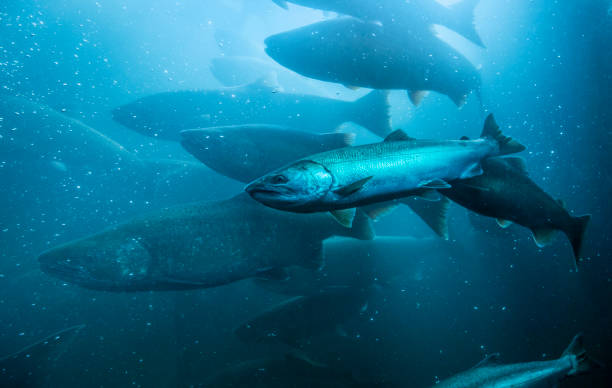Why Fish Don’t Exist? Controversial Concept in Modern Biology

Why Fish Don’t Exist? Controversial Concept in Modern Biology
The idea that “fish don’t exist” may sound perplexing, but it is rooted in recent scientific debates about classification and evolutionary biology. In this blog post, we will delve into this provocative concept, explore its origins, and understand what it means for our understanding of the animal kingdom.
The Origins of the Concept
- Historical Classification of Fish
Historically, the classification of fish was straightforward: any water-dwelling vertebrate with gills and fins fell under this category. Early taxonomists grouped them based on physical characteristics and habitats without considering their evolutionary relationships. This method of classification, however, oversimplified the diversity and evolutionary history of these creatures.
- Evolutionary Biology and Phylogenetics
With advances in evolutionary biology and phylogenetics, scientists began to question traditional classifications. Phylogenetics, the study of evolutionary relationships among biological entities, revealed that the group traditionally known as “fish” does not form a single coherent lineage. Instead, it includes multiple evolutionary branches that diverged significantly over time.
Defining “Fish”
- Traditional Definitions
Traditionally, “fish” encompassed a wide variety of aquatic vertebrates, from jawless hagfish to cartilaginous sharks and bony fish like salmon and trout. These creatures were grouped based on their physical traits rather than their evolutionary history.
- Modern Scientific Perspectives
Modern science views the term “fish” as outdated because it lumps together diverse species that do not share a common ancestor. This perspective underscores the importance of phylogenetic classification, which arranges organisms based on evolutionary relationships rather than superficial similarities.
Why Fish Don’t Exist: The Scientific Argument
- Paraphyly and Polyphyly
The crux of the argument lies in the concepts of paraphyly and polyphyly. A paraphyletic group includes some, but not all, descendants of a common ancestor. “Fish” is considered paraphyletic because it excludes tetrapods (amphibians, reptiles, birds, and mammals), which evolved from fish-like ancestors. In contrast, a polyphyletic group contains organisms that do not share a recent common ancestor, which further complicates traditional taxonomy.
- Issues with Traditional Taxonomy
Traditional taxonomy, based on morphological traits, fails to capture the true evolutionary relationships among organisms. This method has led to artificial groupings, such as “fish,” which do not reflect the natural evolutionary history of these species. Modern taxonomy aims to correct these inaccuracies by using genetic data to map out precise evolutionary lineages.
Implications for Biology and Taxonomy
- Rethinking Animal Classification
The recognition that “fish” do not constitute a natural group prompts a reevaluation of how we classify animals. This shift encourages the adoption of a more accurate system based on evolutionary history, leading to a better understanding of biodiversity and evolutionary processes.
- Impact on Evolutionary Studies
Understanding that “fish” is not a valid taxonomic group has significant implications for evolutionary studies. It highlights the need to study evolutionary relationships in greater detail, considering genetic, morphological, and ecological data to build a comprehensive picture of life’s history.
Case Studies and Examples
- Lungfish and Tetrapods
Lungfish are an excellent example of the complexities in classifying fish. They share more characteristics with tetrapods (four-limbed animals) than with other fish, illustrating the evolutionary transition from water to land.
- Sharks and Rays
Sharks and rays, members of the cartilaginous fish group, diverged early from the lineage, leading to bony fish and tetrapods. Their distinct evolutionary path challenges the traditional grouping of all fish into a single category.
- Bony Fish and Their Descendants
Bony fish (Osteichthyes) include a vast array of species, from goldfish to tuna. However, their descendants, the tetrapods, demonstrate that significant evolutionary changes have occurred, further blurring the lines of traditional classification.
You May Love To Read:
Can Food Cause Anal Gland Issues in Dogs? A Guide
Can Rabbits Eat Grapes? Everything You Need to Know
Public Perception and Education
- Misconceptions About Fish
The idea that “fish don’t exist” may confuse the public, accustomed to the traditional concept of fish. Misconceptions arise from a lack of understanding of the complexities of evolutionary biology and the reasons behind reclassification.
- Educating the Public on Scientific Concepts
Educating the public about these scientific concepts is crucial. Clear communication can help people appreciate the dynamic nature of science and the ongoing efforts to understand the natural world more accurately.
The Future of Taxonomy
- Integrating Genetic Data
The future of taxonomy lies in integrating genetic data to refine our understanding of evolutionary relationships. This approach allows for more precise classifications and a deeper understanding of how species have evolved.
- Emerging Trends in Classification
Emerging trends in classification emphasize the importance of evolutionary history and genetic evidence. As more genomic data becomes available, taxonomists will continue to revise and update the tree of life, leading to a more accurate representation of biodiversity.
Conclusion
The assertion that “fish don’t exist” challenges our traditional understanding of the animal kingdom. By exploring the scientific reasoning behind this concept, we can gain a deeper appreciation for the complexities of evolutionary biology and taxonomy. What are your thoughts on this controversial idea? Share your views in the comments below!
If you found this post intriguing, share it with your friends and family. Don’t forget to subscribe to our blog for more fascinating insights into the world of science and biology!




